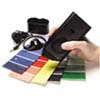Let’s start with the basics: The “in” words are Universal Design. With this in mind, I began my research at The Center for Universal Design in North Carolina. It did not take me long to realize I was oversimplifying the solution. There are two types of housing designs that I will address - Universal Design (UD) and Accessible Design (AD). Their purposes are different.
Universal Design (UD) – The intent of this design is to build environments more usable by as many people as possible at little or no extra cost. Universal Design benefits people of all ages and abilities. This concept would be used by someone who wants to build a house that will likely meet their needs for their entire lifetime. People choosing this design do not have disabilities but want features in their house that will work for them during normal aging.
Accessible Design (AD) - People looking for housing features to overcome barriers for specific disabilities need Accessible Design. Accessible Design usually turns out best if a health care professional, such as an occupational therapist, works with the homeowner, the designer, builder, or remodeler to consider the specific needs of the person who will be living in the home.
People looking for architects, designers, or builders with knowledge and experience in Universal Design, or Accessible Design, might want to try contacting their local Center for Independent Living. This is a nationwide network of centers whose job is to be knowledgeable about the professionals and services for people with disabilities in their geographical region.
Resources:
The Center For Universal Design - This website is a wealth of information. Publications that are a must read if you are considering ways to make you home more accessible:
- Home Modifications and Products for Safety and Ease of Use
- Simple Solutions: Home Automation Technology for Easy, Safe, and Accessible Living
- Universal Design and Accessible Housing Resources
- Home Modifications and Residential Remodeling Resources
Center For Independent Living - This website will provide a list of Centers For Independent Living (CIL) throughout the country. One of their responsibilities is to be aware of services for people with disabilities in their geographical area. Contact the Center closest to you and ask for names of knowledgeable architects or builders.
National Association Of Home Builders - Another source of professionals who do modifications for accessibility are CAPS (Certified Aging in Place Specialists) graduates. They are not Universal Design experts but they were interested enough in learning how to make modifications for people with disabilities that they took the CAPS program. For a list of builders or remodelers who have a CAPS certification, go to the website of the National Association of Home Builders Research Center.






